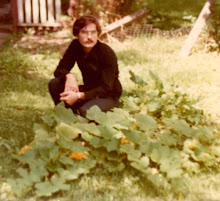Twisted Eye and Tongue: Encounters With Third Meaning
Charles Simic "The Gaze We Knew As A Child" in Dime-Store Alchemy: The Art of Joseph Cornell concludes with the following observation:
The images Cornell has in his boxes are, however of the third kind [images we see with eyes closed]. [...] They tempt the viewer in two opposite directions. One is to look and admire the elegance and other visual properties of the composition, and the other is to make up stories about what one sees. In Cornell's art, the eye and the tongue are at cross purposes. Neither one by itself is sufficient. It's that mingling of the two that makes up the third image.Somehow this sparks a recollection of Roland Barthes "The Third Meaning: Research Notes on some Eisenstein Stills" trans. Stephen Heath in Image, Music, Text.
[obtuse or third meaning] radically recasts the theoretical status of the anecdote: the story (diegesis) is no longer just a strong system (the millennial system of narrative) but also and contradictorily a simple space, a field of permanences and permutations. [p. 64]Image in one, meaning in the other. Permutations here, sensory modalities there. Simple but complex.
And so for day 1125
11.01.2010
